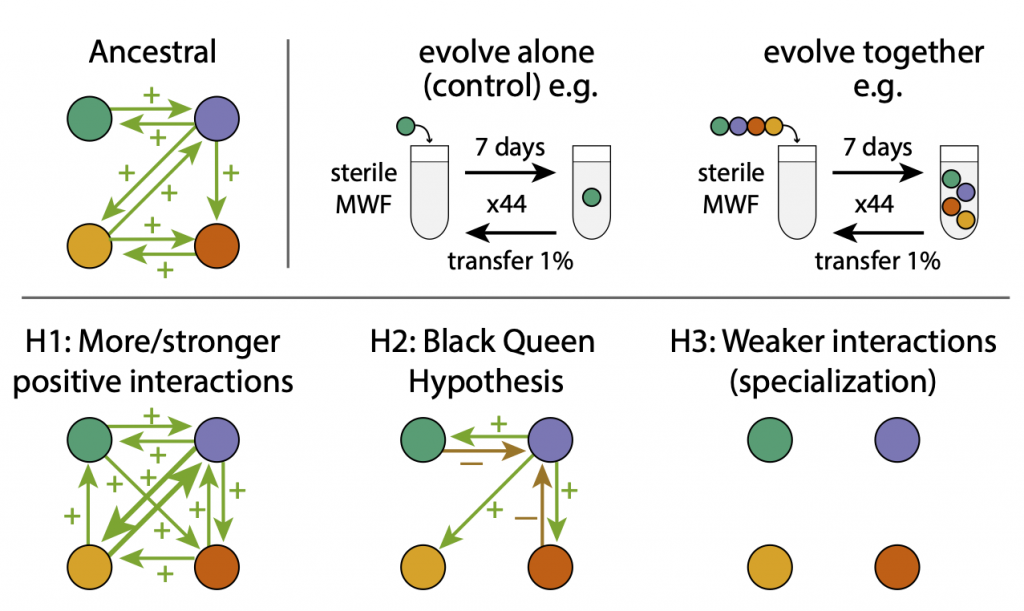Being able to predict the behaviour of multi-species ecosystems can be extremely useful, but is notoriously difficult, particularly over evolutionary timescales. Microbes are a good model system, as they evolve over relatively short time-scales, and because many replicate ecosystems can be cultured in parallel.
We have established a four-species model community that can grow in liquid industrial waste called Metal Working Fluids (MWF). Knowing that the four species facilitated one another in this toxic environment [1], we set out to allow these species to evolve together and asked whether their interactions would change [2]. Would they become more strongly mutualistic? Would their dependencies on one another increase or will they instead switch to competing with one another? After approximately one year of evolving together, we observed a reduction in facilitation between two of the species, with some evidence that they specialised on different environmental niches. Interestingly, replicate lineages containing the same species combinations were quite similar, with some mutations being unique to these biotic conditions. The ability of the community to degrade the pollutant dropped over time, a phenomenon that would be interesting to dig into further.

In another project, we are studying how evolving within a community can affect the capacity of a focal species to adapt to stressful environments. We are building mathematical models that are generating interesting predictions and testing them in the lab and through several collaborations.
References
1. P. Piccardi, B. Vessman, S. Mitri (2019) PNAS.
2. P. Piccardi, E. Ulrich, M. Garcia-Garcerà, R. Di Martino, S. E. A. Testa, S. Mitri (in press) Evolution Letters.
